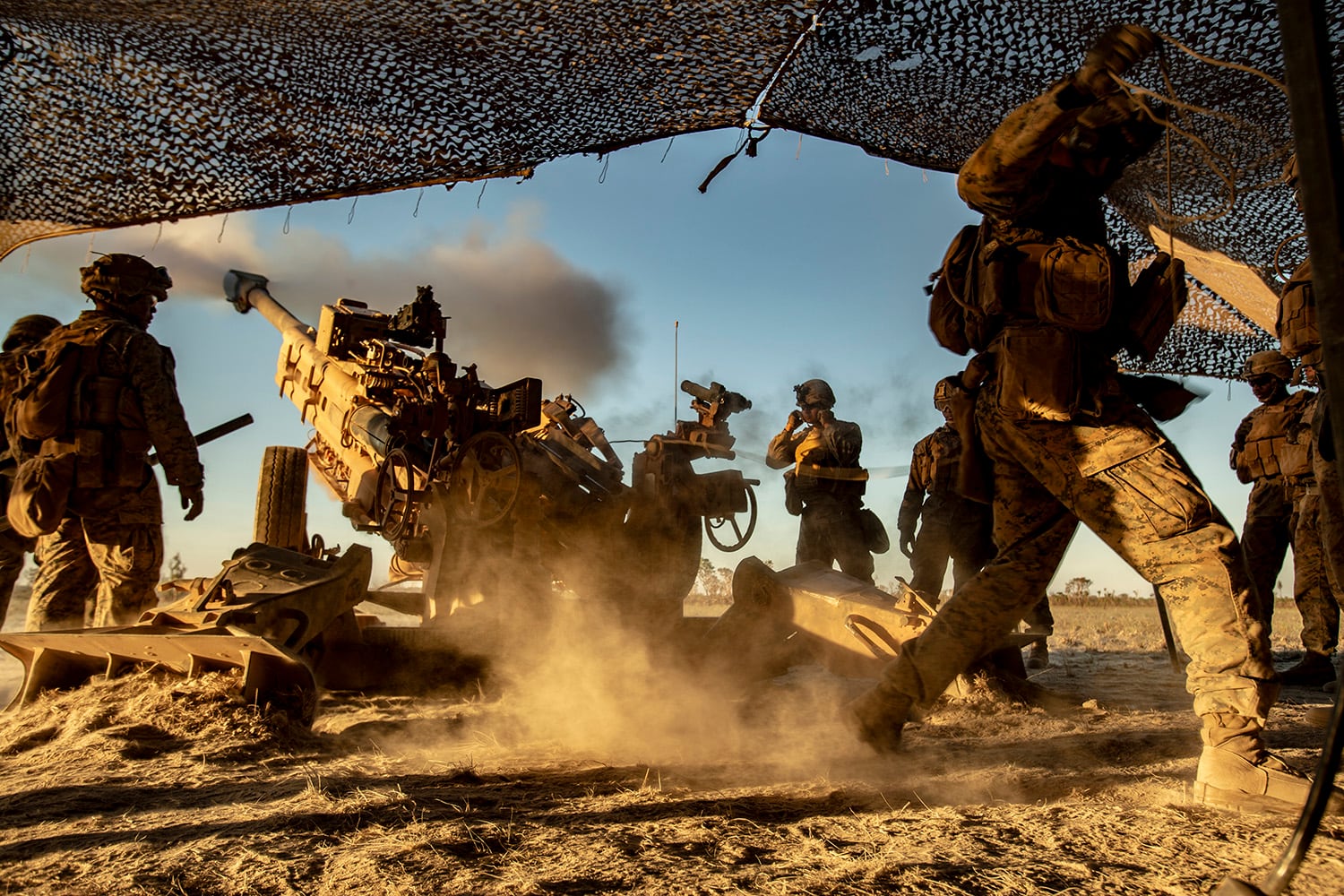Donald Rumsfeld, former U.S. Secretary of Defense, said: “You go to war with the army you have, not the army you might want or wish to have at a later date.”
Rumsfeld was widely criticized for this statement, made during a question-and-answer session in 2003 with U.S. Army troops in Kuwait who were preparing to deploy into Iraq.
He had been asked by an Army specialist why his friends had to scavenge through local landfills looking for scrap metal to armor their Humvees.
Like their Army counterparts, Marines also were scrambling to fabricate and attach metal plating to the sides of their vehicles before driving them into the heavily mined roads of Iraq.
Despite the derision and condemnation Rumsfeld received for his poor choice of words, he was absolutely correct: The Marines went to war with the equipment they had, suffering needless casualties as a result.
RELATED
If nothing else, we should have learned one thing from the conflicts of the 20th and 21st centuries: You don’t pick your wars. They pick you.
No one, no matter how intelligent or prescient, can predict when, where or against whom U.S. Marines will be called upon next to fight. But they will be called. And they will continue to fight some battles in division formation. And they will march to the sounds of the guns with the equipment they have, not the equipment they wish they had.
In the past, the Marine Corps has hedged its bets for fighting across the spectrum of conflict and in all environments by retaining a balanced inventory of forces that could be task organized for the contingency at hand.
An indispensable component of this toolbox has always been sufficient cannon artillery. If Marine Corps Force Design 2030 is implemented as currently planned, the toolbox essentially will be emptied of cannon artillery.
Ill-advisedly or unwisely (arguably both), the Marine Corps is jettisoning 16 (with reported predecisional discussions of 14) of its active 21 cannon artillery batteries.
The five to seven remaining batteries will be expected to support five maneuver regiments and three Marine littoral regiments. Force Design 2030 will retain seven HIMARS rocket batteries and add 14 missile batteries.
There have been reported discussions of retaining some additional cannon batteries in the reserve artillery regiment. But neither rockets nor missiles can fill the void created by gutting cannon artillery in the active force.
As I argued in a recent article: Rockets and missiles complement cannon artillery. They do not and cannot replace it.
Rockets and missiles are incapable of providing close and continuous direct support to Marine infantry. They are best employed for deep interdiction and shaping.
The tactical impacts of only retaining five or perhaps seven cannon batteries in the active inventory have been overlooked. These impacts must be thoroughly considered and understood before the Corps proceeds into the dark abyss of insufficiency.
Under the current plan, the five cannon batteries and seven rocket batteries will be located in the 1st and 2nd Marine Divisions. Marine littoral regiments will have only missile batteries. The most apparent impacts are:
1. Marine expeditionary units.
If future MEUs deploy with a MLRS battery, as currently envisioned in baseline documents, five to seven cannon batteries will be available to support three Marine divisions, which is appallingly insufficient.
If all or some of the MEUs deploy with cannon artillery instead of MLRS, even fewer batteries will be available to the Marine divisions.
Either way, Marine infantry will essentially stop training with cannon artillery. Most infantrymen will never plan, coordinate, or employ cannon artillery in training. The impacts on forward observation, combined arms, massing of artillery fires, and fire support coordination training will be significant.
2. Operations.
Most Marines in combat will fight without close, continuous and accurate fire support.
When the time comes to fire the final protective fires, cannon artillery will be missing. When danger close missions are required, cannon artillery will be not be there to support. When the infantry needs continuous suppression to maneuver, they will not have it. And the infantry’s calls for illumination, colored smoke, white phosphorous, high angle fire and precision destruction of a hard target requiring assault fire will go unanswered.
3. Low-density equipment.
Any artilleryman who served in self-propelled artillery can attest to the curse of low-density equipment. The lower the density of equipment, the more difficult it becomes to maintain combat readiness.
The depth of repair parts and the availability of trained and experienced personnel to maintain and crew low density items are directly related to numbers. The lower the density, the greater the affect when a piece of the equipment is inoperable due to maintenance, manning, or combat loss.
To reiterate, the mission of Marine artillery is to provide close, continuous and accurate fire support to Marine infantry. It is not to provide general support to carrier battle groups in the South China Sea.
The minimum requirement for supporting troops in harm’s way is one battalion of cannon artillery in direct support of an infantry regiment.
Anything less is the moral equivalent of sending Marines into Iraq with unarmored vehicles.
Brig. Gen. Jerry McAbee is a career artillery officer with extensive experience as a forward observer, battery and battalion fire direction officer, artillery battalion S-3, division fire support coordinator and artillery regimental commander.
Have an opinion?
This article is an op-ed and as such, the opinions expressed are those of the authors. If you would like to respond, or have an editorial of your own you would like to submit, please email Marine Corps Times Editor Andrea Scott.
Want more perspectives like this sent straight to you? Subscribe to get our Commentary & Opinion newsletter once a week.




